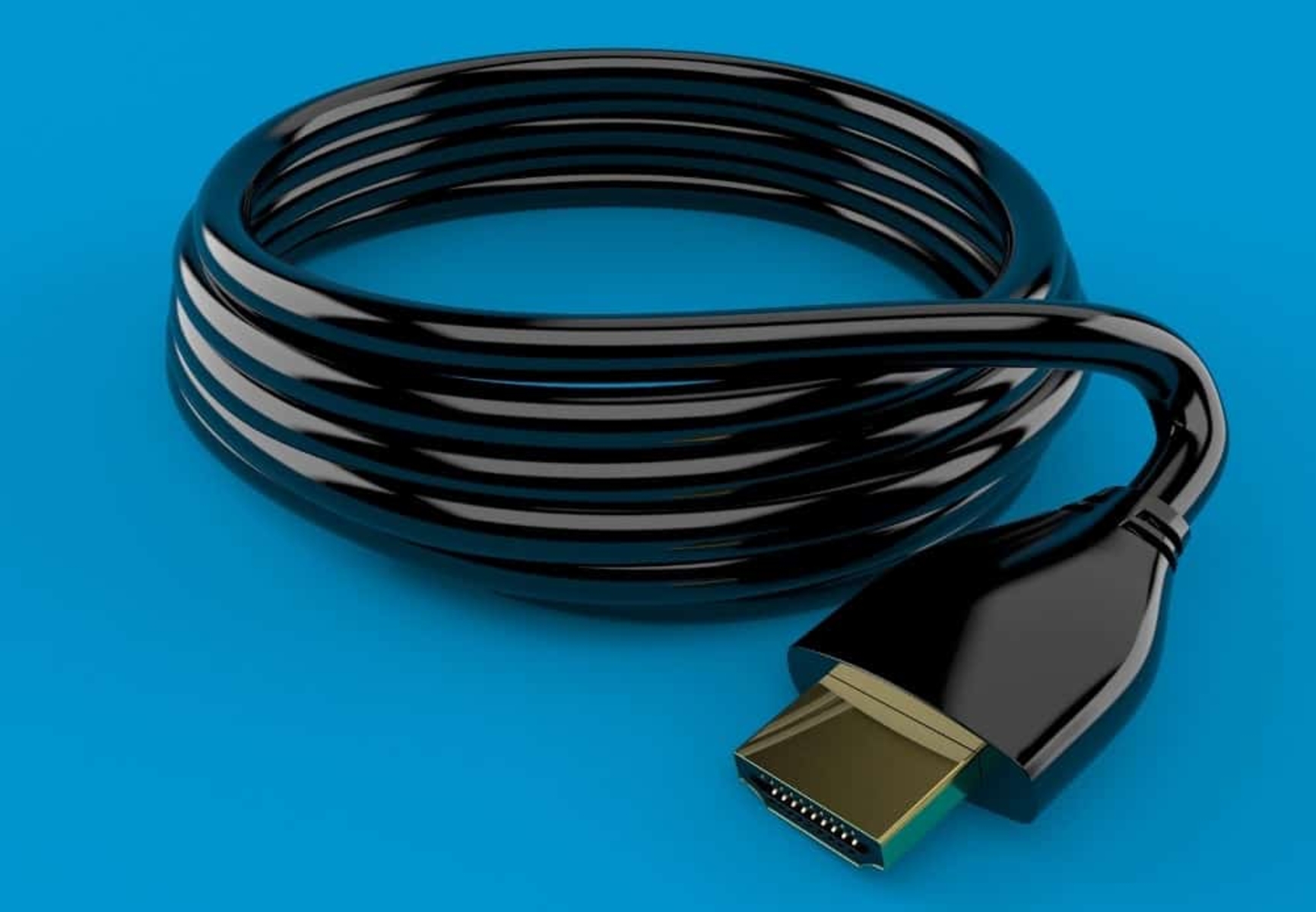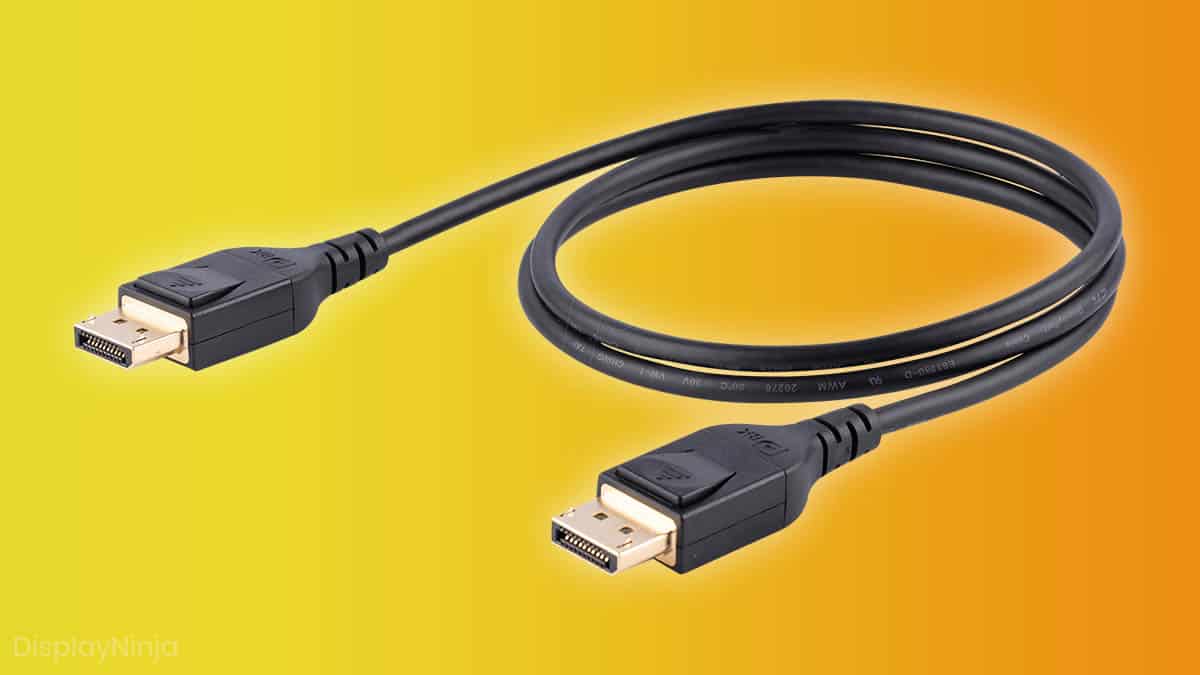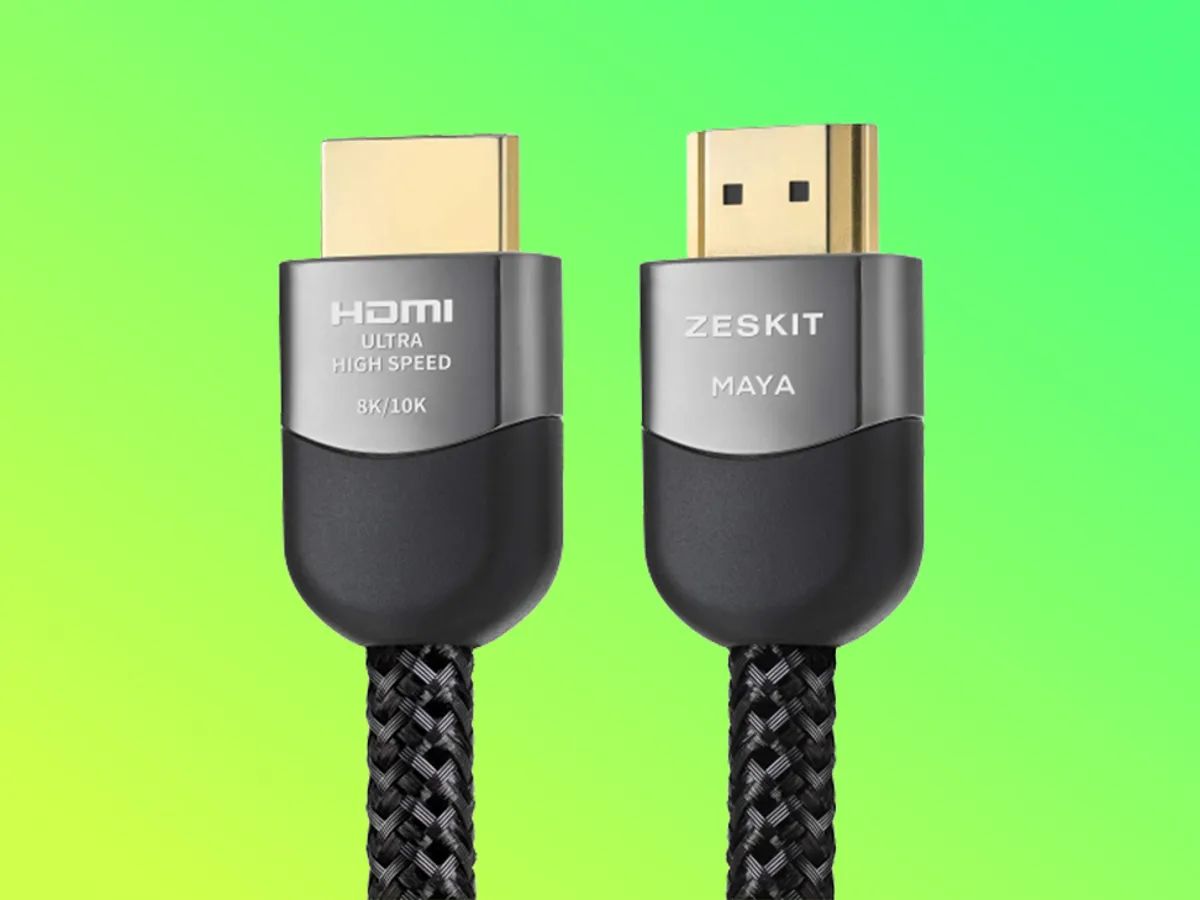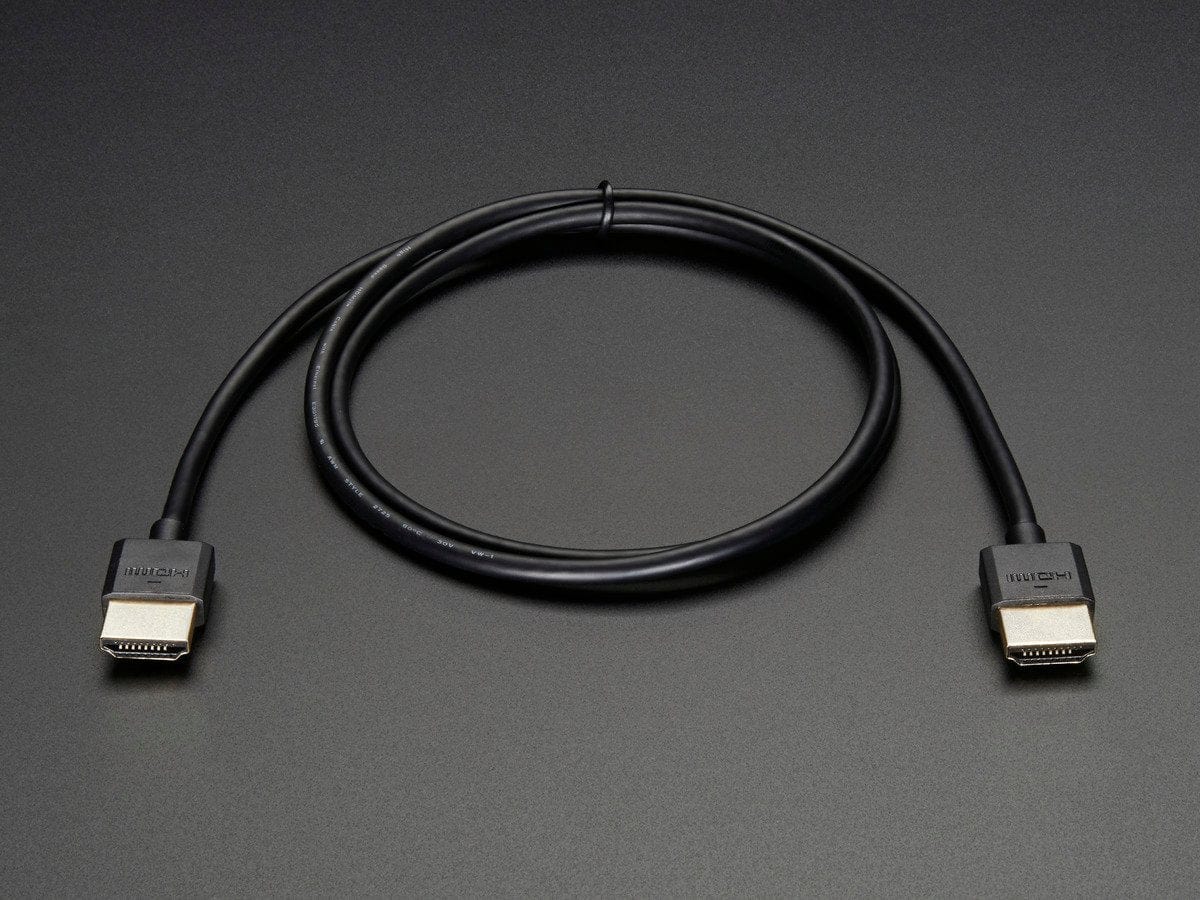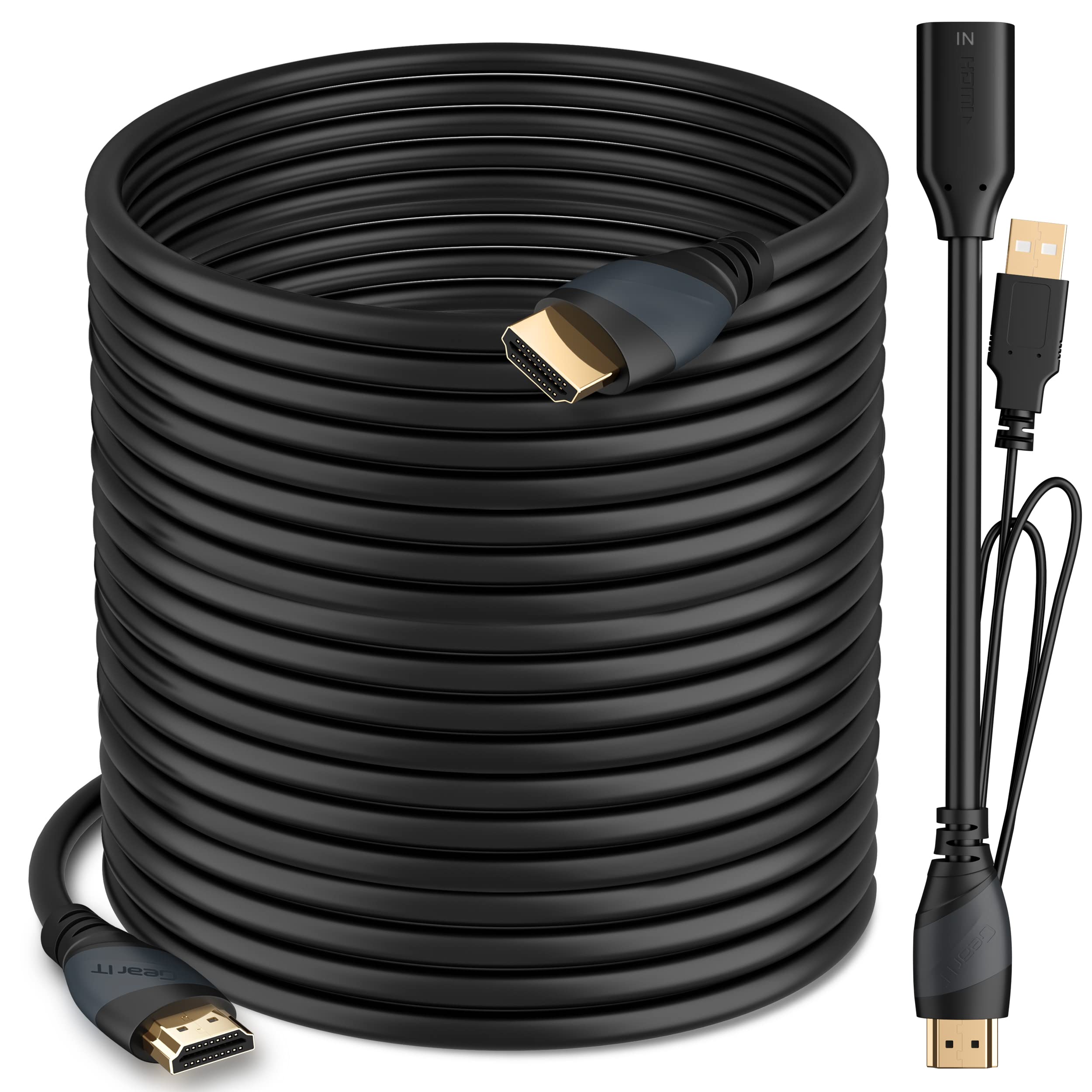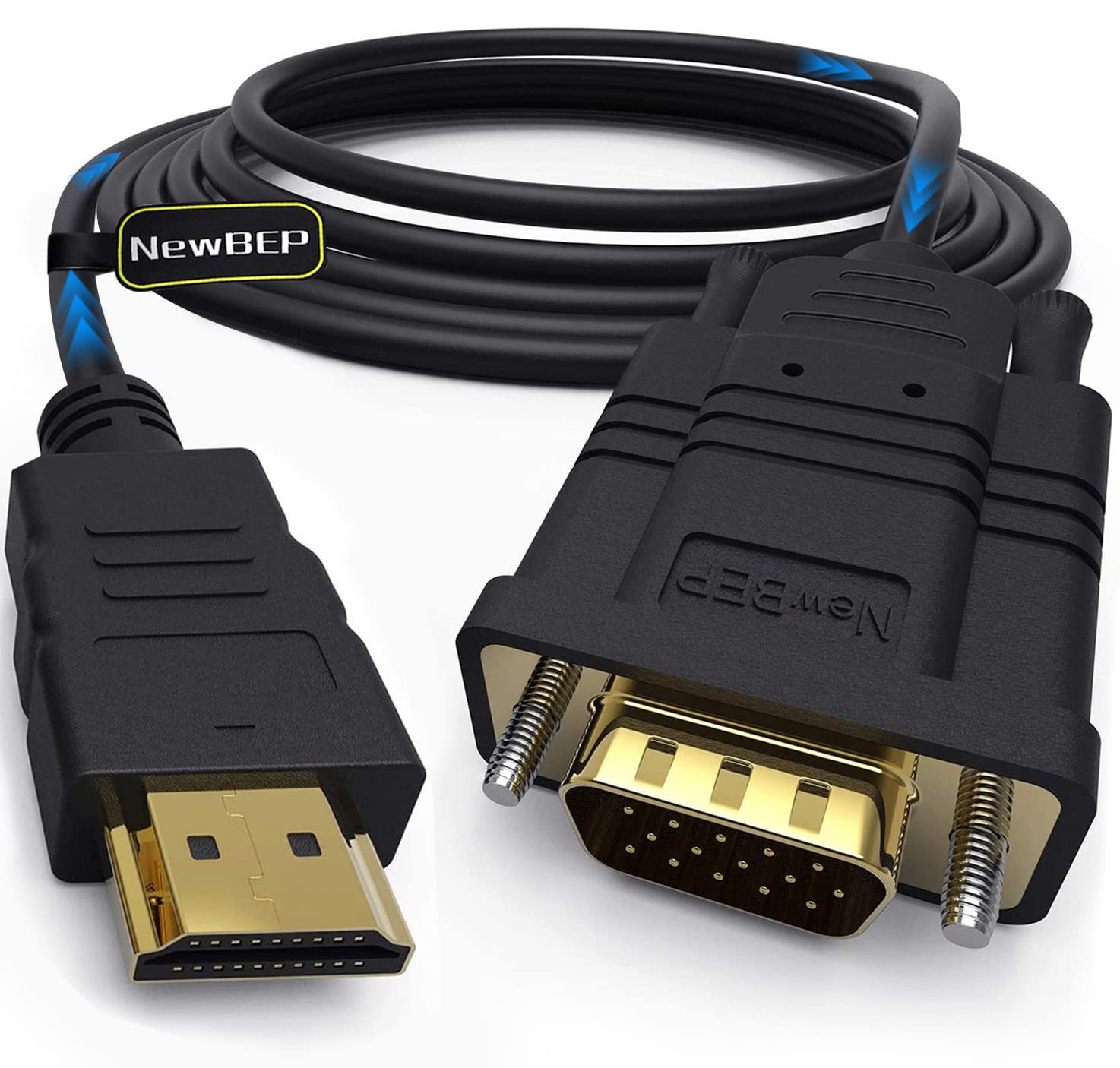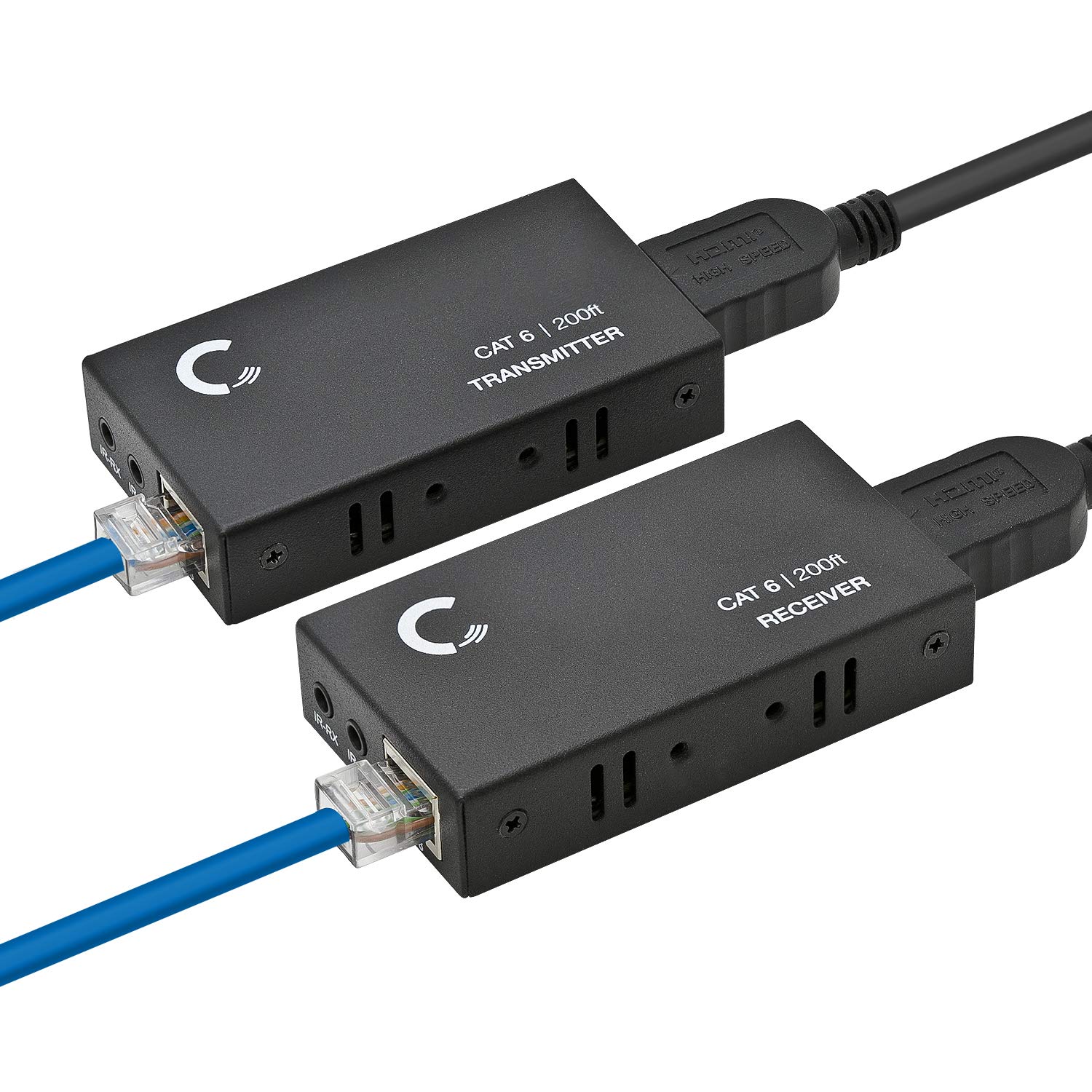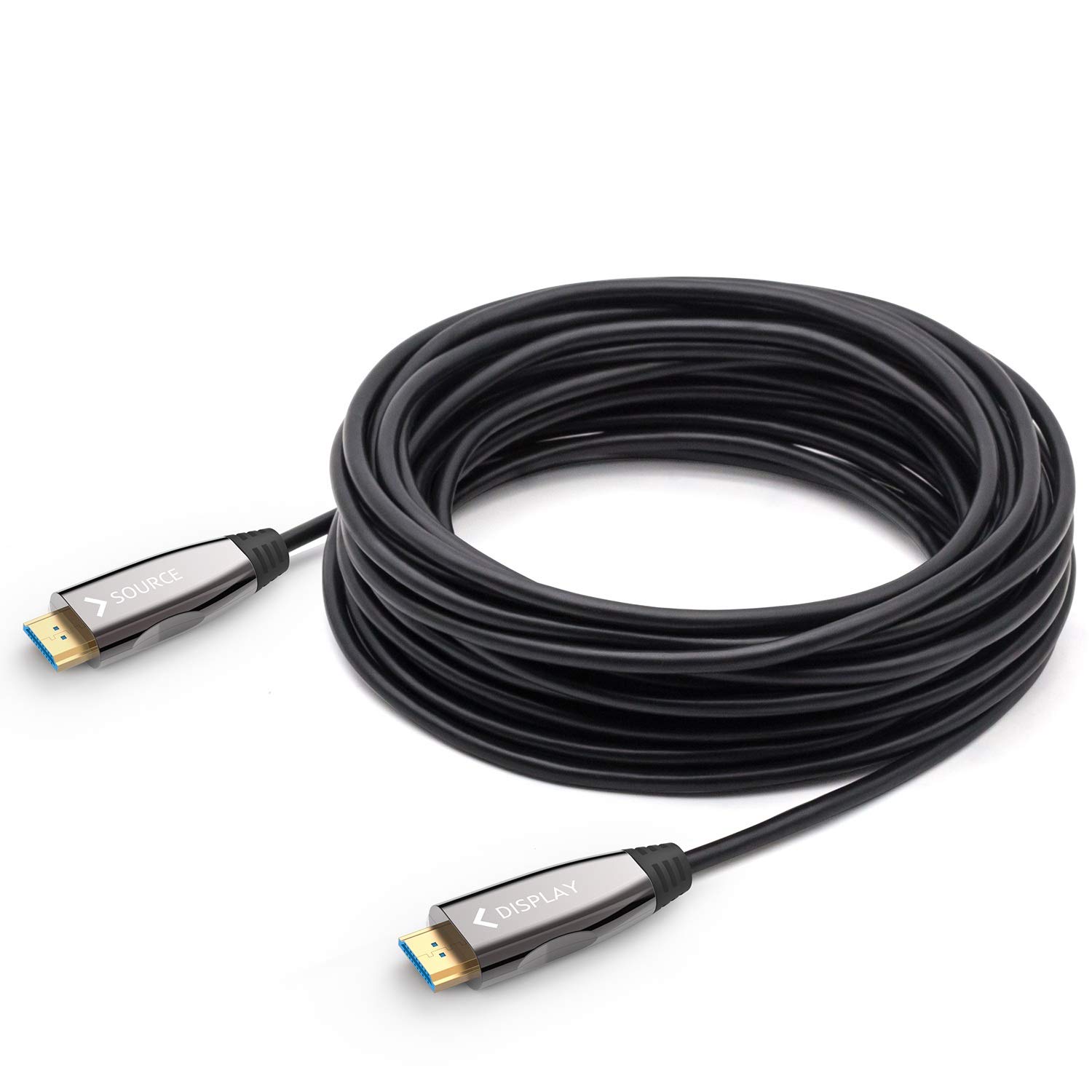The Basics of HDMI Cables
HDMI, which stands for High-Definition Multimedia Interface, is a widely used technology that allows for the transmission of high-quality audio and video signals between devices. HDMI cables have become the standard for connecting devices such as televisions, Blu-ray players, gaming consoles, and computers.
One of the key advantages of HDMI cables is their ability to transmit both audio and video signals digitally, resulting in high-definition picture and sound quality. This digital transmission also eliminates the need for separate audio and video cables, simplifying the setup and reducing clutter.
HDMI cables come in various versions, with each version offering different capabilities and features. The most common version currently in use is HDMI 2.0, which supports resolutions up to 4K (Ultra HD) and a range of audio formats, including Dolby TrueHD and DTS-HD Master Audio.
Another important aspect of HDMI cables is their connector type. The most common connector type is Type A, which has 19 pins and is used for most consumer electronics devices. There are also smaller connectors available, such as Type C (mini HDMI) and Type D (micro HDMI), which are commonly used with portable devices like smartphones and tablets.
When choosing an HDMI cable, it’s essential to consider the cable’s length. HDMI cables come in different lengths, ranging from a few feet to 50 feet or more. The length of the cable you need will depend on the distance between your devices and the specific requirements of your setup.
It’s important to note that the quality of the cable itself, rather than its length, is more critical for achieving optimal performance. High-quality HDMI cables are constructed with superior materials and shielding to ensure reliable signal transmission and minimize interference.
In summary, HDMI cables are the go-to solution for connecting audio and video devices, offering high-definition quality and seamless digital transmission. When selecting an HDMI cable, consider the version and connector type, as well as the length required for your specific setup. Additionally, invest in a high-quality cable to ensure the best signal quality and performance.
Factors That Affect HDMI Cable Lengths
The maximum length of an HDMI cable that can reliably transmit a high-quality signal depends on several factors. Understanding these factors can help you determine the appropriate cable length for your setup.
One of the primary factors that affect HDMI cable lengths is the signal degradation caused by attenuation. Attenuation refers to the loss of signal strength as it travels through a cable. As the length of the cable increases, so does the attenuation, which can result in a poorer quality signal. This is why longer HDMI cables may have a reduced picture quality or intermittent loss of signal.
The gauge of the HDMI cable also plays a significant role in determining its maximum length. The gauge refers to the thickness of the conductors inside the cable. Generally, thicker conductors have lower resistance, resulting in less signal loss. Thicker gauge cables are typically required for longer distances to minimize signal degradation.
Another factor to consider is the quality of the HDMI cable itself. Cheaper, lower-quality cables may not have the same level of shielding and may not be able to maintain a strong and consistent signal over longer distances. Investing in a higher-quality HDMI cable can help ensure a stable signal even at longer lengths.
The type of signal being transmitted can also affect the maximum cable length. For example, if you are transmitting a standard 1080p HD signal, you may be able to achieve longer cable lengths compared to transmitting a 4K Ultra HD signal. The higher bandwidth requirements of 4K and other high-resolution formats may limit the maximum cable length.
Lastly, environmental factors, such as electromagnetic interference (EMI) and radio frequency interference (RFI), can impact the maximum cable length. If your HDMI cable is placed near sources of interference, such as power cables or other electronic devices, it can result in signal degradation or loss. Optimal cable routing and careful placement can help minimize these issues.
In summary, the maximum length of an HDMI cable is influenced by factors such as signal attenuation, cable gauge, cable quality, type of signal, and environmental factors. To ensure a reliable and high-quality signal, it’s essential to consider these factors when selecting the appropriate cable length for your specific setup.
Typical HDMI Cable Lengths
HDMI cables are available in a range of lengths to accommodate various setups and device configurations. The typical cable lengths can vary depending on the manufacturer and specific requirements of the application. Here are some common HDMI cable lengths and their uses:
1. Short Lengths (3-6 feet): Short HDMI cables are commonly used for connecting devices that are in close proximity to each other, such as connecting a Blu-ray player to a TV or a gaming console to a monitor. These shorter cables are ideal for desktop setups or small entertainment systems.
2. Medium Lengths (10-15 feet): Medium-length HDMI cables are often used for connecting devices that are a bit further apart, such as connecting a cable box or satellite receiver to a TV that is mounted on the wall. These cables provide flexibility and allow for some distance between the devices.
3. Long Lengths (25-50 feet): Long HDMI cables are typically used for installations where there is a significant distance between the source device and the display. These cables are commonly used in large home theaters or commercial settings where the equipment is located in a separate room or at a distance from the viewing area.
4. Extra-Long Lengths (50+ feet): For installations that require an extra-long cable run, there are HDMI cables available in lengths of 50 feet or more. These cables often incorporate signal boosters or active technology to ensure that the signal remains strong and stable over longer distances.
It’s important to note that the maximum length of an HDMI cable can vary depending on factors such as cable quality, signal strength, and the type of signal being transmitted. While 50 feet is a common standard for extra-long cable lengths, it’s essential to consult the manufacturer’s specifications and recommendations for optimal performance.
In addition to pre-made cables, there are also HDMI cable extenders and repeaters available that allow you to extend the cable length further. These devices can be useful in situations where the desired cable length exceeds the maximum length supported for a standard HDMI cable.
In summary, HDMI cables come in a variety of lengths to accommodate different setups and needs. Whether you require a short cable for a desktop setup or an extra-long cable for a large home theater, choosing the appropriate length will ensure optimal performance and a seamless audiovisual experience.
Common Misconceptions About HDMI Cable Lengths
When it comes to HDMI cable lengths, there are several common misconceptions that can lead to confusion and unnecessary expenses. Understanding these misconceptions can help you make informed decisions when selecting HDMI cables for your setup. Let’s debunk some of the most common misconceptions:
1. “A more expensive HDMI cable equals better performance”: Many people believe that spending more money on a high-priced HDMI cable will automatically result in better performance. However, the truth is that as long as the cable meets the necessary specifications for the desired resolution and audio format, there will be no noticeable difference in performance between expensive and affordable cables. It’s important to prioritize cable quality and adherence to standards rather than price.
2. “Longer HDMI cables automatically mean loss of quality”: While it’s true that longer HDMI cables have the potential for signal degradation, it’s not always the case. Signal loss depends on various factors, such as the cable quality and gauge. With the advances in technology, it is possible to use longer HDMI cables without significant loss of quality. It’s important to choose a high-quality cable that is specifically designed for longer distances to mitigate any potential signal degradation.
3. “An HDMI cable must be the same length as the distance between devices”: Another common misconception is the belief that the HDMI cable must be the exact same length as the distance between the devices being connected. In reality, you can use a shorter or longer cable as long as it meets your specific needs. It’s often better to have a slightly longer cable to allow for flexibility and future changes in your setup.
4. “All HDMI cables are the same”: This misconception assumes that all HDMI cables provide the same level of performance, regardless of brand or quality. In reality, the quality of HDMI cables can vary significantly. Lower-quality cables may not have the necessary shielding or materials to ensure reliable signal transmission, resulting in potential signal loss or interference. It’s important to choose HDMI cables from reputable brands that adhere to industry standards.
5. “Using HDMI cable extenders always leads to signal loss”: While using HDMI cable extenders may introduce additional signal loss, it doesn’t automatically guarantee a degraded signal. High-quality HDMI extenders are designed to minimize signal loss and maintain optimal performance over longer distances. It’s crucial to choose reliable and well-reviewed HDMI extenders that are compatible with your specific requirements.
By dispelling these common misconceptions, you can make more informed decisions when choosing HDMI cables for your setup. Prioritize factors such as cable quality, specifications, and compatibility rather than falling for marketing gimmicks or misinformation. This will ensure the best performance and reliability for your audiovisual experience.
Risks of Using HDMI Cables That Are Too Long
While HDMI cables have made it possible to connect devices over longer distances, using cables that are too long can introduce some risks and potential issues. It’s important to be aware of these risks when selecting the appropriate cable length for your setup. Here are some potential risks of using HDMI cables that are too long:
1. Signal Loss: One of the most significant risks of using excessively long HDMI cables is the loss of signal quality. As the length of the cable increases, the signal strength can weaken, leading to a degraded audiovisual experience. The longer the cable, the greater the potential for signal loss, resulting in reduced image quality, pixelation, or even a complete loss of signal.
2. Interference: Longer HDMI cables are more susceptible to electromagnetic interference (EMI) and radio frequency interference (RFI). Environmental factors, such as nearby power cables or other electronic devices, can cause interference and disrupt the HDMI signal. This interference can manifest as artifacts on the screen, audio glitches, or intermittent signal interruptions.
3. Compatibility Issues: Some devices may have limitations on the length of the HDMI cable they can support. If you use a cable that exceeds the recommended length for a particular device, you may encounter compatibility issues or be unable to establish a reliable connection. It’s essential to consult the manufacturer’s specifications and recommendations for maximum cable lengths to ensure compatibility.
4. Increased Latency: Using longer HDMI cables can introduce increased latency, also known as input lag. This is the delay between when a command is input into a device and when the corresponding action is seen on the display. High latency can be particularly detrimental in gaming or fast-paced video applications, as it can impact responsiveness and overall user experience.
5. Impact on High-Resolution Signals: HDMI cables that are too long may struggle to transmit high-resolution signals, such as 4K (Ultra HD) or HDR (High Dynamic Range). These signals require larger bandwidths and can be more susceptible to degradation over longer cable lengths. This can lead to reduced image clarity, color banding, or inconsistencies in contrast and brightness.
To mitigate these risks, it’s essential to choose the appropriate HDMI cable length for your specific setup. Consider factors such as the distance between devices, the quality of the cable, and the specific requirements of your audiovisual equipment. If longer cable lengths are necessary, utilize high-quality cables, signal boosters, or HDMI extenders to maintain signal integrity and minimize risks.
Considerations for Long HDMI Cable Installations
Installing long HDMI cables requires careful consideration to ensure optimal signal quality and performance. Whether you’re setting up a large home theater or connecting devices in a commercial setting, here are some important factors to keep in mind for long HDMI cable installations:
1. Cable Quality: Invest in high-quality HDMI cables specifically designed for longer distances. These cables are built with thicker conductors and enhanced shielding to minimize signal loss and interference. Look for cables that comply with HDMI specifications and are manufactured by reputable brands.
2. Cable Gauge: Consider the gauge of the HDMI cable, which refers to the thickness of the conductors. Thicker gauge cables have lower resistance and can better maintain signal integrity over longer distances. Consult the cable manufacturer’s specifications for the recommended gauge based on the desired cable length and resolution.
3. Signal Boosters and Repeaters: For extremely long cable runs, consider using signal boosters or HDMI repeaters. These devices amplify the signal, ensuring that it remains strong and stable even over extended distances. Signal boosters can be placed at various points along the cable to maintain signal integrity and optimize performance.
4. Cable Routing: Proper cable routing is essential to minimize the risk of signal interference. Keep HDMI cables away from sources of electromagnetic interference (EMI), such as power cables, fluorescent lights, or speakers. Use cable management solutions to organize and separate HDMI cables from other cables to avoid potential signal degradation.
5. Environmental Considerations: Consider the environmental conditions in which the HDMI cables will be installed. Excessive heat, moisture, or direct sunlight can impact the integrity of the cable and affect signal quality. Ensure that the cables are protected from these factors to maintain optimal performance.
6. Future Proofing: When installing long HDMI cables, it’s wise to future-proof your setup. Consider potential changes or upgrades to your audiovisual equipment. Leave some additional slack in the cable or install conduit for easy cable replacement or upgrades in the future.
7. Testing and Troubleshooting: After the installation, thoroughly test the HDMI cable for proper signal transmission, image quality, and audio performance. If you encounter any issues, check the cable connections, ensure the cable length adheres to recommended standards, and adjust cable routing if necessary. Troubleshoot any signal interruptions or inconsistencies to ensure a seamless audiovisual experience.
In summary, long HDMI cable installations require careful consideration and attention to detail. Prioritize cable quality, gauge, and the use of signal boosters or repeaters when necessary. Proper cable routing, environmental considerations, and future-proofing strategies will help ensure optimal signal quality and performance for your long HDMI cable setup.
Solutions for Extending HDMI Cable Lengths
When the desired HDMI cable length exceeds the standard lengths available, there are several solutions available to extend the reach and maintain optimal signal quality. These solutions help overcome the limitations of maximum HDMI cable lengths. Here are some effective ways to extend HDMI cable lengths:
1. HDMI Extenders: HDMI extenders allow for longer cable runs by transmitting the HDMI signal over a different medium. The most common type of HDMI extender is the HDMI over Cat5e/Cat6 extender. This solution utilizes Cat5e or Cat6 Ethernet cables to send the HDMI signal over long distances while maintaining signal quality. HDMI over fiber extender solutions are also available for even longer cable runs.
2. HDMI Repeaters: HDMI repeaters are devices that regenerate and amplify the HDMI signal, allowing for longer cable lengths by boosting the signal strength. These devices are typically placed at regular intervals along the HDMI cable run to maintain signal integrity and prevent signal loss or degradation. HDMI repeaters are often used for installations with extremely long cable runs.
3. HDMI Fiber Optic Cables: HDMI fiber optic cables are specifically designed for long-distance HDMI transmissions. These cables use fiber optic technology to transmit the HDMI signal, resulting in high bandwidth and minimal signal loss over extended lengths. HDMI fiber optic cables are a reliable solution for installations that require maximum cable lengths with minimal interference.
4. Wireless HDMI: Wireless HDMI technology allows for cable-free transmission of the HDMI signal over short to medium distances. These systems consist of a transmitter and receiver that wirelessly transmit the HDMI signal between devices. Wireless HDMI can be an effective solution for situations where running cables is impractical or challenging.
5. HDMI Matrix Switches: HDMI matrix switches provide a way to connect multiple HDMI sources to multiple displays over longer distances. These switches allow for the distribution of HDMI signals to different displays without the need for long HDMI cables. With the use of shorter HDMI cables, matrix switches enable flexibility in routing HDMI signals to various devices throughout a complex setup.
It’s important to note that the choice of solution will depend on the specific requirements of the installation and the desired cable length. Consider factors such as signal quality, compatibility, and budget when selecting the best solution to extend HDMI cable lengths.
When implementing these solutions, it’s crucial to follow the manufacturer’s guidelines and specifications, as well as ensure cables are properly installed and connected. Testing the extended HDMI setup after the installation is essential to verify that the signal is transmitting correctly and that the image and audio quality meet expectations.
In summary, extending HDMI cable lengths beyond the standard limits is possible with the use of HDMI extenders, repeaters, fiber optic cables, wireless HDMI, or HDMI matrix switches. These solutions provide flexibility and reliability for installations that require longer cable runs while maintaining optimal signal quality.
Improving HDMI Signal Quality for Longer Cables
As HDMI cable lengths increase, maintaining optimal signal quality becomes crucial to ensure a seamless audiovisual experience. There are several techniques and strategies you can employ to improve HDMI signal quality for longer cables. Here are some effective ways to enhance signal quality:
1. High-Quality HDMI Cables: Invest in high-quality HDMI cables that are specifically designed for longer distances. These cables are constructed with superior materials and shielding to minimize signal loss and interference. Look for cables that meet HDMI specifications and are manufactured by reputable brands to ensure reliable signal transmission.
2. Active HDMI Cables: Consider using active HDMI cables for longer distances. Active cables incorporate built-in signal amplification, allowing for better signal integrity over extended lengths. These cables are typically capable of maintaining higher bandwidth signals with less degradation, ensuring a higher-quality audiovisual experience.
3. Cable Thickness and Gauge: Select HDMI cables with thicker conductors and lower gauge numbers. Thicker cables have less resistance and can better handle longer cable runs, reducing signal loss and maintaining signal strength. Consult the manufacturer’s specifications for the recommended cable gauge based on length and desired image resolution.
4. Signal Boosters and Repeaters: Implement signal boosters or HDMI repeaters along the HDMI cable run to amplify and regenerate the signal. These devices help minimize signal degradation over longer distances by boosting the signal strength periodically. Signal boosters and repeaters can be strategically placed along the cable run to ensure an optimal and consistent signal throughout the installation.
5. Cable Routing and Separation: Proper cable routing and separation are crucial for minimizing signal interference. Keep HDMI cables separated from power cables and other potential sources of electromagnetic interference (EMI). Use cable management solutions, such as cable raceways or conduits, to organize and separate HDMI cables from other cables, reducing the risk of signal degradation.
6. Environmental Factors: Consider the environmental conditions in which the HDMI cables will be installed. Excessive heat, moisture, or direct sunlight can impact cable performance and signal quality. Ensure that the cables are protected from these factors to maintain optimal signal transmission.
7. Testing and Troubleshooting: After the installation, thoroughly test the HDMI signal to ensure proper signal transmission and image/audio quality. Use test patterns and specialized HDMI diagnostic tools to identify and troubleshoot any signal issues. This will help ensure that the signal quality meets the desired standards and resolves any potential problems.
Implementing these strategies and techniques can significantly improve HDMI signal quality for longer cables. By investing in high-quality cables, using active cables or signal boosters, employing proper cable routing, and testing the signal, you can enhance the audiovisual experience and minimize the potential for signal loss or degradation.
HDMI Cable Length Recommendations for Different Applications
The appropriate HDMI cable length for your specific application depends on various factors, including the distance between devices and the desired audiovisual setup. Here are some general HDMI cable length recommendations for different applications:
1. Home Theater Systems: For most home theater systems, where devices like Blu-ray players, streaming devices, and gaming consoles are typically located in close proximity to the TV or projector, HDMI cables ranging from 3 to 10 feet will suffice. Shorter cables help minimize clutter and ensure a clean setup without excessive cable lengths.
2. Wall-Mounted TVs: When mounting a TV on a wall, consider using HDMI cables measuring between 6 and 15 feet, depending on the distance between the TV and the devices. This range provides ample length to connect devices positioned below or adjacent to the mounted TV while allowing for some flexibility in cable routing.
3. Professional Audiovisual Installations: Professional installations, such as in conference rooms, auditoriums, or large venues, may require longer HDMI cable runs. In these cases, it is essential to use high-quality HDMI cables designed for longer distances and consider the use of signal boosters, HDMI extenders, or fiber optic cables to maintain signal integrity. Cable lengths can range from 25 feet to several hundred feet, depending on the specific needs of the installation.
4. Gaming Setups: Gaming enthusiasts who require HDMI connections between game consoles and televisions or monitors can generally opt for HDMI cables ranging from 6 to 15 feet, depending on the setup. These lengths provide flexibility while minimizing signal degradation. However, consult the manufacturer’s recommendations for specific gaming devices, as some may have limitations on cable lengths.
5. Commercial Displays and Signage: In commercial applications, where long HDMI cable runs are often necessary, consider using HDMI extenders or fiber optic cables. This allows for cable lengths ranging from 50 feet to several hundred feet or more. These solutions ensure the signal remains strong and reliable for digital signage displays, video walls, or other large-scale installations.
It’s important to note that these are general recommendations, and the specific requirements of your setup may differ. Factors such as the resolution being transmitted, the quality of the HDMI cables, and the presence of potential sources of interference can also influence the suitable cable length.
Finally, it is always advisable to consult the manufacturer’s specifications and recommendations for your specific devices and equipment. This will provide the most accurate guidance on HDMI cable length requirements for your particular audiovisual setup.
Summary
HDMI cables play a crucial role in connecting audiovisual devices, offering high-definition quality and seamless digital transmission. Understanding the basics of HDMI cables, including their versions and connector types, is essential for choosing the right cable for your setup.
Factors such as signal attenuation, cable gauge, and cable quality can affect HDMI cable lengths. While longer cables have the potential for signal loss and interference, advancements in technology have made it possible to use longer HDMI cables without significant degradation in signal quality.
Common misconceptions about HDMI cable lengths include the belief that more expensive cables automatically provide better performance, the assumption that longer cables always result in a loss of quality, and the idea that HDMI cables must be the same length as the distance between devices.
Risks of using HDMI cables that are too long include signal loss, interference, compatibility issues, increased latency, and potential impact on high-resolution signals. However, there are solutions available to extend HDMI cable lengths, such as HDMI extenders, repeaters, fiber optic cables, wireless HDMI, and HDMI matrix switches.
To improve HDMI signal quality for longer cables, consider using high-quality cables, active cables, signal boosters, and repeaters. Proper cable routing, separation from sources of electromagnetic interference, and environmental considerations also contribute to optimal signal transmission.
For different applications, HDMI cable length recommendations vary. Home theaters and wall-mounted TVs typically require shorter cables, while professional audiovisual installations and commercial displays may necessitate longer cable runs with the use of signal boosters or fiber optic cables.
In summary, selecting the right HDMI cable length, along with considering cable quality, cable routing, and signal-boosting options, ensures optimal signal quality and a seamless audiovisual experience for your specific setup. When in doubt, consult the manufacturer’s specifications and recommendations to ensure the best performance and compatibility for your audiovisual connections.







